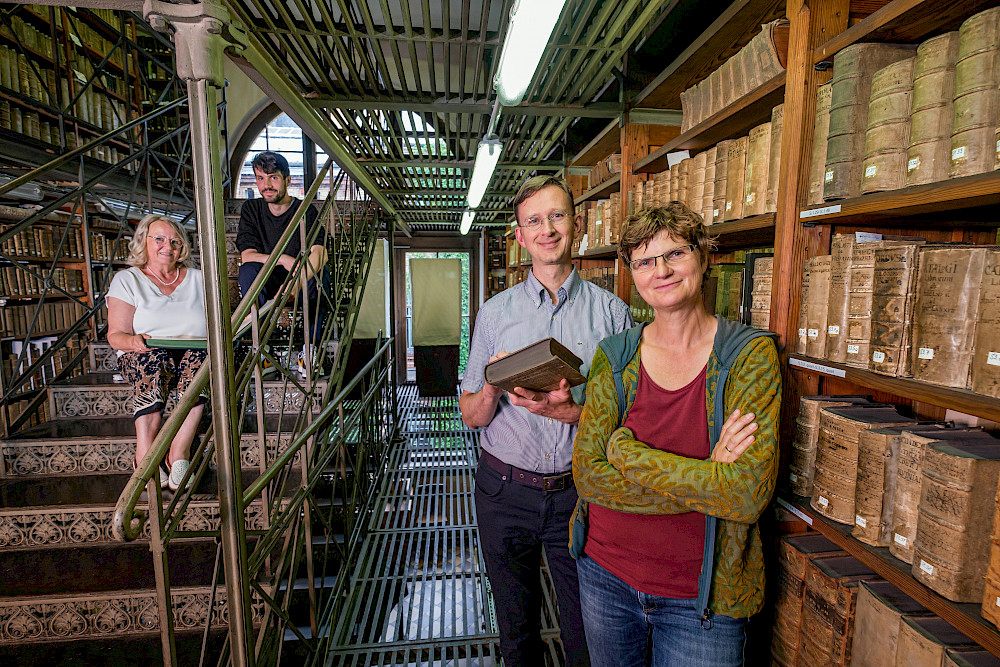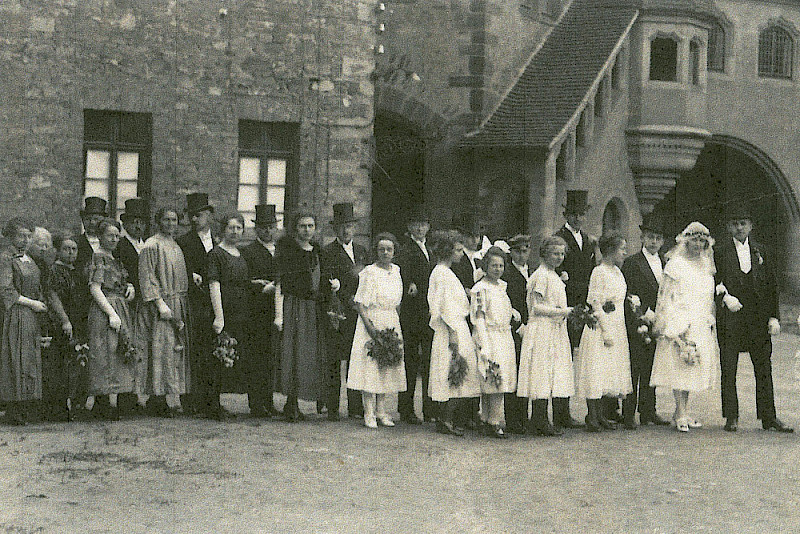Genealogy research for science

How can data from church records be integrated into historical research? This was the question posed at the start of the citizen science project “Hallische Heiratsgeschichten” (Halle’s Marriage Stories), which Dr Katrin Moeller from MLU’s Historical Data Centre launched together with the Department of Economic and Social History in the spring of this year. The idea behind it: “We wanted to give more voice to the private side of life in the 19th century,” says the historian. This requires massive amounts of data, which are already available in the form of digitised church books, but which have not yet been completely gathered and processed. “Getting them ready for scientific analysis takes an enormous amount of work which researchers at the university basically don’t have time for,” she says. “We simply lack the resources in our day-to-day work.”
Nevertheless, research can benefit from access to such data. What is initially rather factual information in church records, such as age, occupation and marital status, is excellent for reconstructing social interactions at the time. This is why the historians initiated the aforementioned citizen science project, in which the data from Halle’s church records are gathered by interested members of the public. Also on board: the Association for Computer Genealogy, which has software that is well-suited for this purpose, as well as many other associations and initiatives.
There was an overwhelming response to the appeal at the start of the project and to the online kick-off workshop. Seventy people from all over Germany signed up, most of whom were private genealogists who by nature have an interest in such data. One was Isa Brähler, a native of Halle who fled the GDR with her parents in 1959. Since then, she has lived in Aschaffenburg, where she managed a call centre for many years. “Even as a 20-year-old, I tried to compile a family tree,” she says. Now she is retired and is able to trace her ancestors back seven generations. She has even published the results in a book. “In the process, I became aware of the project at MLU.”
Joachim Hassel’s story is similar. Like Isa Brähler, he also began researching his family history as an adolescent. When he heard about the “Hallische Heiratsgeschichten” project, he wanted to “give something back”, he recalls. “As a genealogist, I have been utilising data for years from historical sources that are accessible on the web.” His involvement in the citizen science project is a hobby. In his normal professional life, he also deals with datasets, albeit of a completely different nature. The landscape designer works in the radio archives at the MDR broadcasting house in Halle. “Working with old church records is a way to immerse yourself in days gone by,” he explains, adding that the old Kurrent script has its own aesthetic appeal.
The project is based on the church records of St. Mary’s and St. George parishes in Halle, which have already been digitised for the period from 1820 to 1900. But what exactly do the citizen scientists do? As soon as they log into the online system of the Association for Computer Genealogy, they are shown a digitised page of a church register. The information that can be read there, such as the names of the bride and groom and the names and occupations of their parents, must then be deciphered, checked and entered into the system. The advantage: citizen scientist Joachim Hassel has been working with such tools and databases for years.
“The work is sometimes tedious, because it is not easy to decipher the old manuscripts, especially at first,” says Isa Brähler, who has worked on 49 such pages so far. Recording the listed occupations is also challenging because many are no longer in use today. One example Brähler came across was university dance master. “Here it is important to delve deeper and exchange ideas with others involved in the project,” she says. At first they met online once a week to discuss doubtful cases and uncertainties. The interval between these meetings has become longer, “because you become more sure of yourself and establish a certain work routine,” says Brähler. Now, there are few entries in the church records that cannot be clarified. And the quality of the entered data is also ensured by working together.
Katrin Moeller is pleased that the project has made such enormous strides. By way of comparison, a total of 2,900 digital pages of church records would have to be processed if all marriages of the 18th and 19th centuries are to be included. It takes about two hours per page, which can quickly increase if there are ambiguities. So far, 330 pages have been logged. Katrin Moeller estimates that it will take at least another twelve months until everything is finished.
The data gathered by project participants like Isa Brähler and Joachim Hassel will then be published online and can also be used by interested laypeople, such as avid genealogists. However, it is scientists like Moritz Müller who are the most pleased about this. He is currently writing his doctoral thesis at the Institute of History. In it, he is investigating social networks in the 19th century. “I would like to find out between which of the families in Halle did social contacts develop,” he explains, because marriage behaviour, according to his thesis, is an indicator of a society’s social structure. Müller, who has himself indexed various pages from the church records, relies on the work of the citizen scientists for his doctoral studies. In general, he regards their participation in the project as “an enormous benefit”. They are intrinsically motivated and have a specific interest in the topic. They aren’t just doing it because they are getting paid. “That makes their work particularly valuable,” says Müller, adding: “They have expert knowledge which also benefits the project.”
Katrin Moeller’s interim verdict is also thoroughly positive. “The data from the ‘Hallische Heiratsgeschichten’ project are of interest to researchers and laypeople alike.” Special attention should be paid in this regard to where genealogy and historical science intersect. “There is a lot of over-lap,” says Moeller. “Through their work, the genealogists generate added value for research.” What’s more, historical science research projects can now be conducted that one could only dream of in the 1980s. “At the time, we also lacked the technical capabilities that now give us deeper insights into the past,” says Moeller. Because: “You often find the big historical con-texts reflected in the little things.”
Dr. Katrin Moeller
Institute of History
Telephone +49 345 55-24286
Mail katrin.moeller@geschichte.uni- halle.de
Moritz Müller
Institute of History
Telephone +49 345 55-24422
Mail moritz.mueller@geschichte.uni- halle.de
Further articles
Science for everyone
Citizen scientists are playing an ever more pivotal role. They collect data, decipher old manuscripts and more – an invaluable resource. Read more

